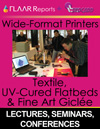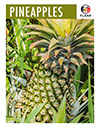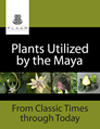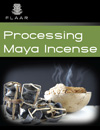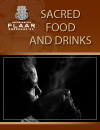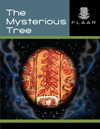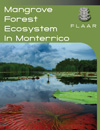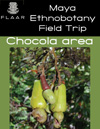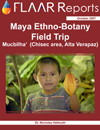-
Incense & Sacred Resins of the Maya
-
The Mythical Water Lily in Maya Art, Ritual & Diet
-
Ceiba and Sacred Trees of the Maya; Iconography of Incense Burners & Urns
-
Maya Ethnobotany: Exotic Tropical Fruits & Unusual Vegetables of Guatemala, Belize, and Mexico.
Available as individual lectures, or all-day seminars, or part of longer conferences.
Dr Hellmuth is also available as Visiting Professor or Guest Lecturer at museums, colleges, and universities.
Professor Hellmuth is also available to lecture on cruise ships as well as for tour groups visiting Guatemala, Mexico, Belize, and Honduras.
 |
|
FLAAR does not use old photos from some miscellaneous pile of snapshots. Instead FLAAR sends out expeditions with a full camera crew to do fresh high-quality digital photography. A scanned 35mm slide, or worse, a scanned color negative, will never be close to the accurate color of a color-balanced digital original. We use Nikon, Canon and Hasselblad digital cameras to document Maya ethnobotanical specimens. So when you bring archaeologist and ethno-botanist Dr Nicholas Hellmuth to your city, to your university, college, museum, botanical garden, or club or group to lecture, you can count on a dynamic presentation. Here is Nicholas doing fresh photography of Ceiba pentandra, the sacred world tree of the Maya and most other pre-Columbian Mesoamerican cultures. He is using a 22-megapixel Phase One P25+ digital system (August 2009, in the Costa Sur area of Guatemala). |
 |
|
It is rare that an archaeologist actually lives in an ethnobotanical garden. Dr Nicholas Hellmuth not only has worked for decades in the rain forests of Tikal and Lake Yaxha area but he has his own ethnobotanical garden so he can study pertinent species up close. Here is one of several ethnographically important Maya plants, the Palo de Pito. This tree is one of the sacred trees of the Quiche and other Highland Maya people. Nicholas' years of research are dedicated to tropical plants and animals which are pictured in Maya murals, pottery, and stelae, Palo de Pito is known locally as tzite; the scientific name is Erythrina corallodenron. Dr Hellmuth has one mature bush in his garden that is already bearing flowers and fruits after less than two years. This tree is easy to transplant (from cuttings) but so far has not been easy from seeds. Both the flower and seeds are photogenic. But it is the significant use of the seeds among the Highland Maya people that counts. It would also be useful for archaeologists to check in middens, caches, and burials to see if remains of these seeds can be found. |
 |
|
Cacao was a sacred beverage, especially for the royal family. When Nicholas was 19 years old he discovered cacao in the Tomb of the Jade Jaguar at Tikal (while taking a year off from Harvard to work for the University of Pennsylvania project at Tikal). The cacao beans were inside one of the offering vessels next to the royal funeral bundle (which was wrapped in jaguar hide and had it's head encircled with quetzal feathers). FLAAR has been doing quite a lot of research on both cacao and pataxte these last two years, with a staff of experienced Guatemalan botanists. |
|
Here are sample photographs of flavoring for cacao. FLAAR currently has the largest high-res digital photo resource on Maya and Aztec flavoring for cacao and chocolate. |

|

|

|

|
|
We are making lists of all the edible flowers of Guatemala and Mesoamerica, here are some examples. |

|

|
|
Since much of our work is to help provide documentation about which native plants can help improve local diet, we have been studying edible fruits for several years. Here are sample photographs from our recent years of photography. |

|

|
Photography exhibits on Maya ethnobotany (and archaeology) available for your museum or university or for your event
 |
High resolution photographs by Dr Nicholas Hellmuth are available for fine art photography exhibits at reasonable cost. It would be appropriate also to invite Dr Hellmuth to the opening event.
Most recent edited May 17, 2013.
First posted Feb 4, 2008. Updated August 19, 2009. Updated May 25, 2010.

